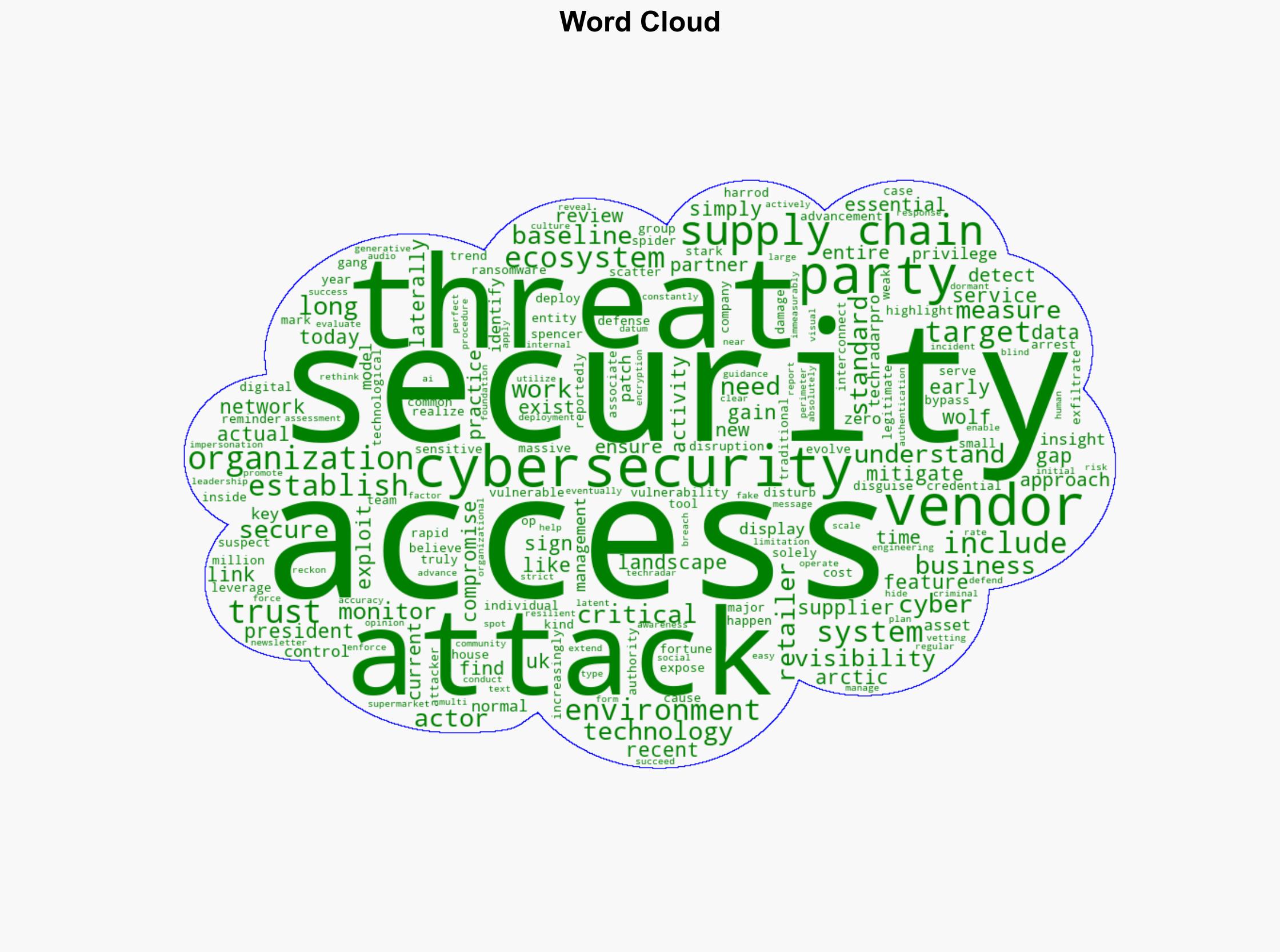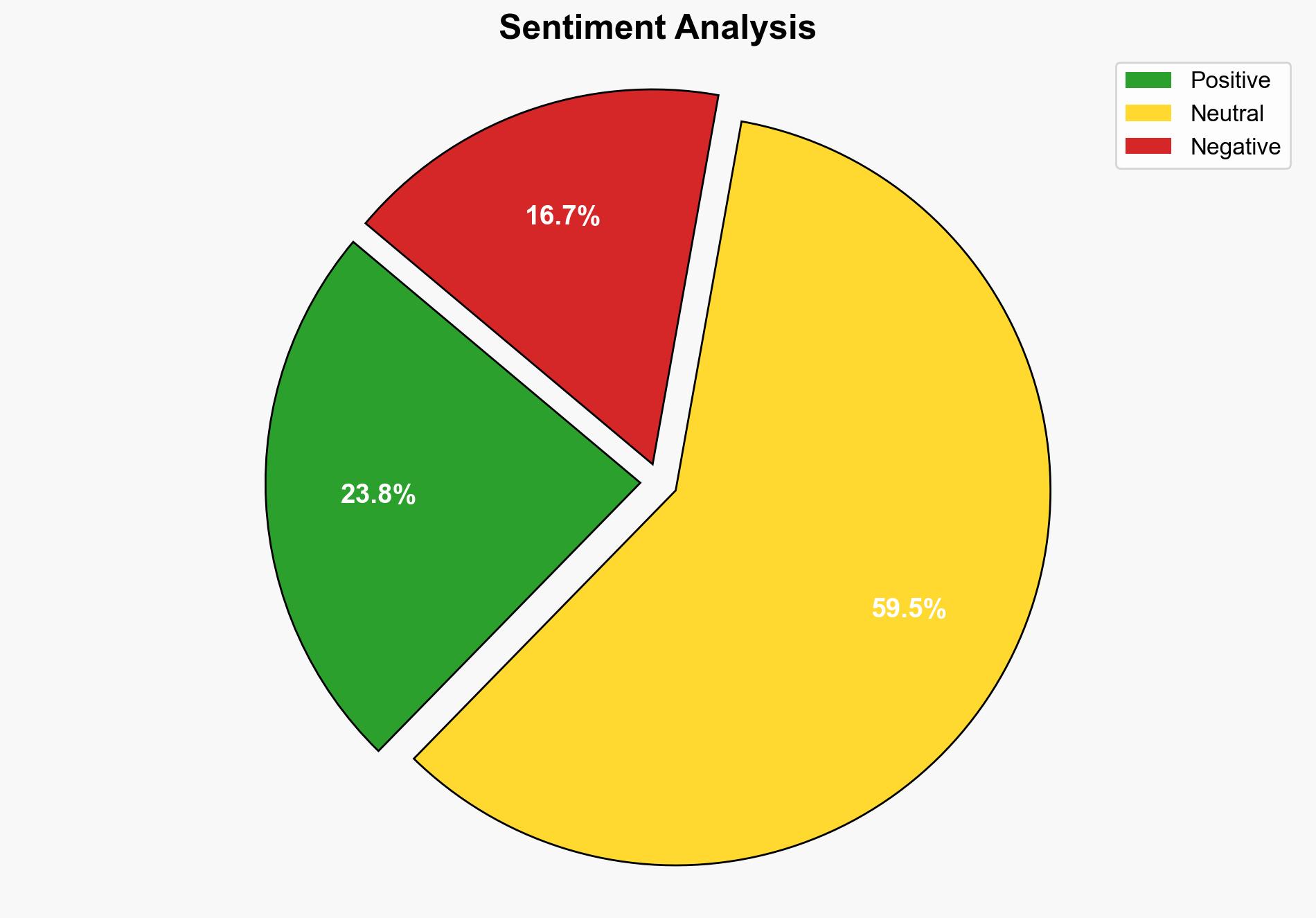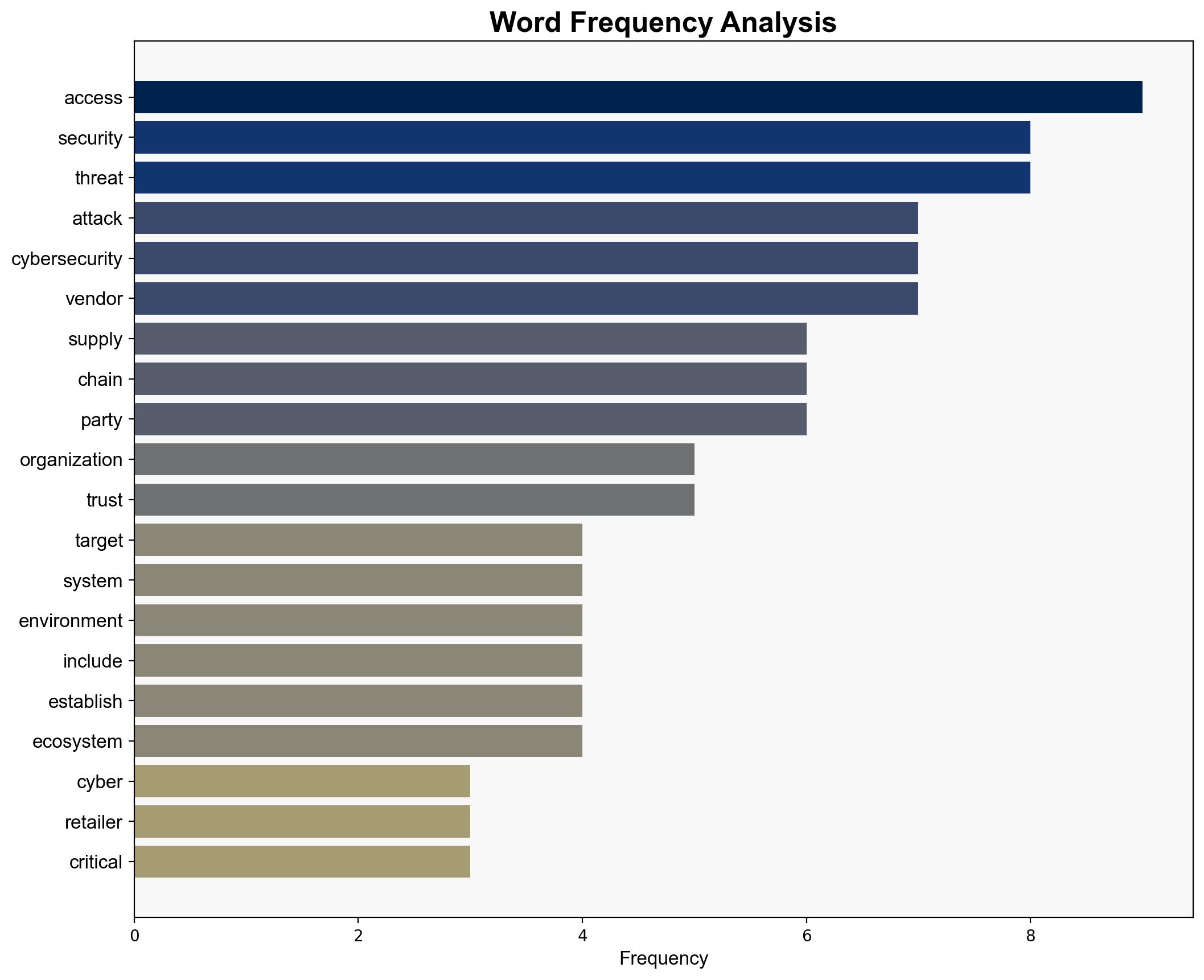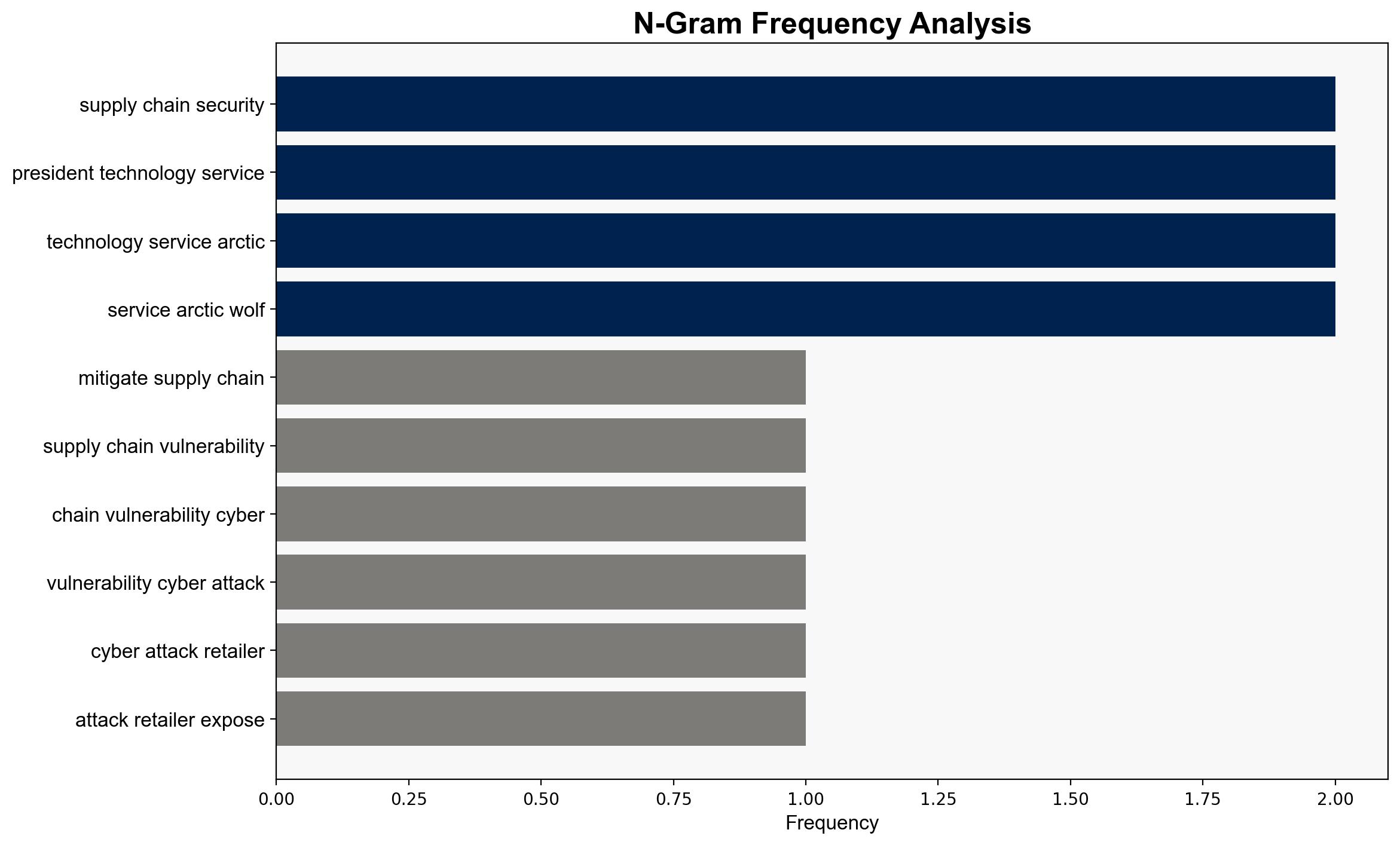Mitigating supply chain vulnerabilities – TechRadar
Published on: 2025-09-12
Intelligence Report: Mitigating Supply Chain Vulnerabilities – TechRadar
1. BLUF (Bottom Line Up Front)
The most supported hypothesis is that cybercriminals are increasingly targeting supply chains due to their interconnected nature and inherent vulnerabilities. This is facilitated by technological advancements and the exploitation of human trust. Confidence level: High. Recommended action: Implement a comprehensive supply chain cybersecurity strategy focusing on zero-trust models and continuous monitoring.
2. Competing Hypotheses
1. **Hypothesis A**: Cybercriminals are primarily targeting supply chains because they offer multiple entry points to large networks, allowing attackers to bypass traditional defenses and access critical systems.
2. **Hypothesis B**: The increase in supply chain attacks is primarily due to the rapid advancement of generative AI, which enables attackers to create sophisticated phishing and impersonation schemes that exploit human trust.
Using Analysis of Competing Hypotheses (ACH), Hypothesis A is better supported as it aligns with the observed trend of attackers leveraging weak links in the supply chain to gain access to larger networks. While generative AI plays a role, the fundamental vulnerability lies in the interconnectedness and trust-based relationships within supply chains.
3. Key Assumptions and Red Flags
– **Assumptions**:
– Organizations have not fully adapted to the evolving threat landscape.
– Supply chains inherently possess weak links that are exploitable.
– **Red Flags**:
– Over-reliance on technological solutions without addressing human factors.
– Potential underestimation of the role of AI in facilitating these attacks.
– **Blind Spots**:
– Lack of comprehensive visibility into third-party vendor security practices.
4. Implications and Strategic Risks
The trend of targeting supply chains poses significant economic risks due to potential disruptions and financial losses. Cyber threats could escalate into geopolitical tensions if state actors are involved or if critical infrastructure is targeted. The psychological impact on businesses and consumers could erode trust in digital transactions and supply chain reliability.
5. Recommendations and Outlook
- Adopt a zero-trust model across the supply chain, ensuring that all access is strictly controlled and monitored.
- Enhance vendor vetting processes and establish clear cybersecurity standards for third-party partners.
- Invest in AI-driven monitoring tools to detect anomalies and potential threats in real-time.
- Scenario Projections:
- Best Case: Successful implementation of robust cybersecurity measures reduces attack frequency and impact.
- Worst Case: Continued vulnerabilities lead to significant disruptions and financial losses.
- Most Likely: Gradual improvement in security practices mitigates some risks, but challenges persist due to evolving threats.
6. Key Individuals and Entities
– Mentioned entities include major UK retailers like Marks & Spencer and Harrods.
– Cyber gang “Scatter Spider” is implicated in recent attacks.
7. Thematic Tags
national security threats, cybersecurity, counter-terrorism, regional focus




